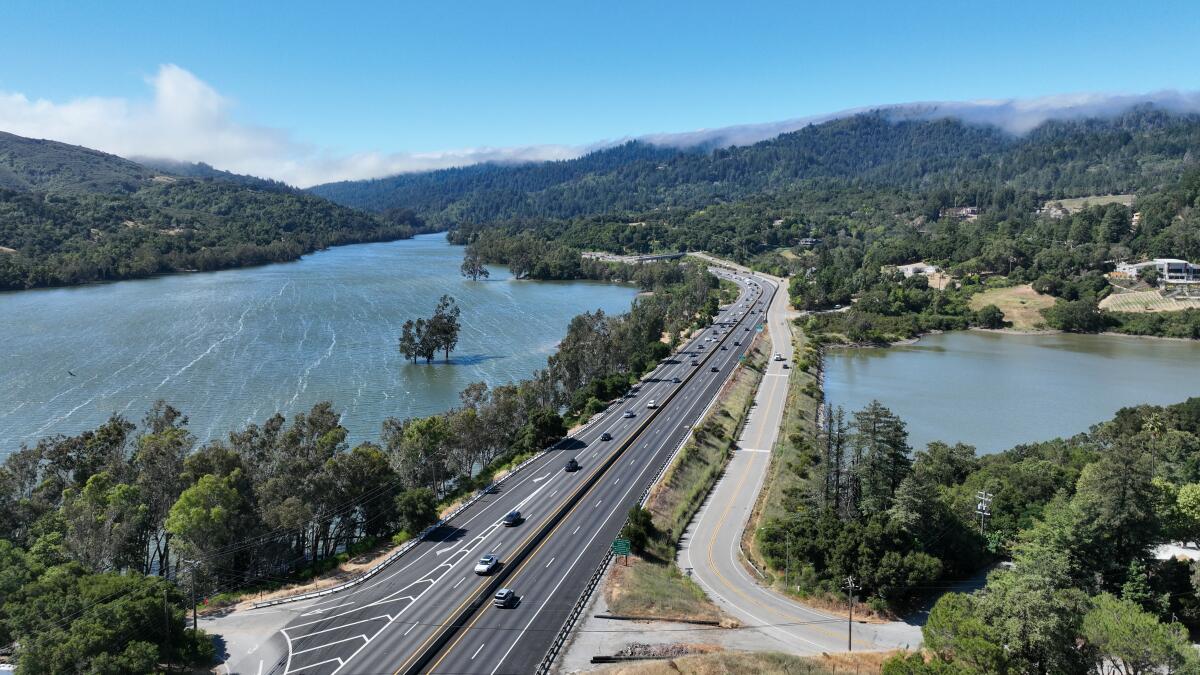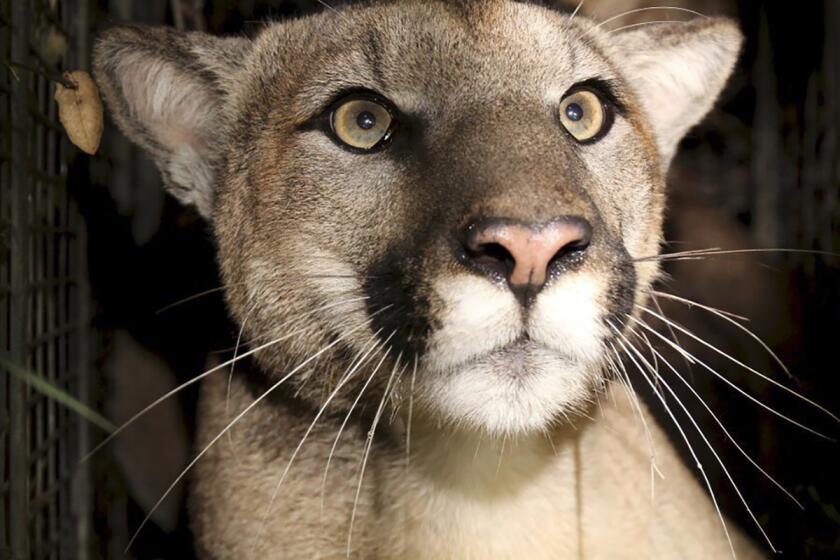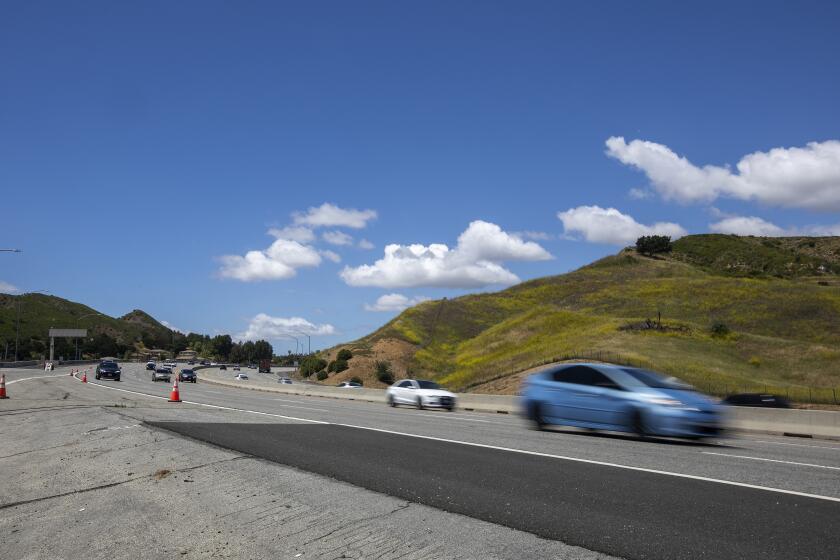A wildlife crossing is proposed for Highway 17 in the Santa Cruz Mountains

- Share via
People view highways as a way to move from Point A to Point B, but to the animals that inhabit either side of a busy roadway, the lanes are a potentially deadly barrier.
Between 2016 and 2023, there have been at least 613 reports of mountain lions killed by oncoming traffic, according to the UC Davis Road Ecology Center. Over the last month there have been two mountain lions found dead on L.A. County highways: one on the 405 Freeway on Thursday whose cause of death is still being investigated, and another on June 15 that was struck by a vehicle in Agoura Hills near an unfinished wildlife crossing over the 101 Freeway.
Other animals at risk of becoming roadkill include deer, coyotes and raccoons.
In an effort to conserve wildlife and rein in the amount of roadkill, transportation officials and advocates are starting to build passageways for wildlife to safely cross major highways in California.
The latest project, which is still under environmental review, is the Highway 17 Wildlife and Trail Crossing Project in the Santa Cruz Mountains.
The Midpeninsula Regional Open Space District has proposed a pair of passageways across the highway in Los Gatos: an overpass for hikers, bikers and horse riders, and an underpass for mountain lions, deer and other creatures.
The cougar, which was not wearing a monitoring collar, was killed near the Wallis Annenberg Wildlife Crossing, a passageway that crosses over the freeway.
The project will include fencing to direct animals to the underpass and deter them from entering the highway. It will also have a one-way wildlife escape structure to give animals that wander onto the highway a safe way to exit. The district recently decided that both crossings will be located north of the Lexington Reservoir.
The project, which has been in the works for 10 years, focuses on an area that the UC Davis Road Ecology Center identified as one of the state’s top six hotspots for wildlife and traffic collisions, said Ryan McCauley, a spokesperson for Midpen. The others named by the center were Highway 50 in Eldorado County, Interstate 680 in Contra Costa and Alameda counties, Interstate 280 on the San Francisco Peninsula, Highway 101 in Marin County and Highway 49 in Placer and Nevada counties.
McCauley said the mountain lions and other animals that roam either side of Highway 17 need “uninterrupted space” to create their dens, mate and hunt for food.
This project would bridge the gap Highway 17 has created and merge 30,000 acres of open space, a “crucial project [that would] ensure the health of the mountain lions in our area,” McCauley said.
The state of California already has at least 185 wildlife crossings, according to the Wildlands Network wildlife crossing database. But highway crossings have gotten renewed attention in recent years, with several either in development or under construction. The $92-million Wallis Annenberg Wildlife Crossing over the 101 Freeway in Agoura Hills, for instance, is slated to be completed in 2026.
Portions of Highway 101 will be shut down starting April 15 to continue work on the Wallis Annenberg Wildlife Crossing in Agoura Hills.
There’s a sense of urgency for crossings now as the public starts to understand how climate change is pushing animals to shift their habitats, either to adapt to vegetation changes or to flee areas affected by wildfires, said Fraser Shilling, director of the Road Ecology Center. Such shifts, he said, are fundamental to ecosystem resilience.
In the long term, Neal Sharma of the Wildlife Conservation Network said, “habitats and plant communities in one part of the state today may very well not be the same in decades to come, and all organisms need to be able to find comfortable places to make their existence.”
A large, highly trafficked road might “have the effect of a wall and stop those things from playing out,” he said.
Wildlife crossings are just one part of the answer to the problem of vehicle-animal collisions. Shilling said there are three ways for communities to reduce roadkill: Drive less, slow down and build fencing.
“The first two, most people are unwilling to do [unless] they’re in a National Park and it says, ‘Hey, slow down for the bears,’” he said.
Crossings help wildlife, but Shilling argued that fencing really protects animals and reduces their ability to get on the roadway in the first place.
More to Read
Sign up for Essential California
The most important California stories and recommendations in your inbox every morning.
You may occasionally receive promotional content from the Los Angeles Times.













